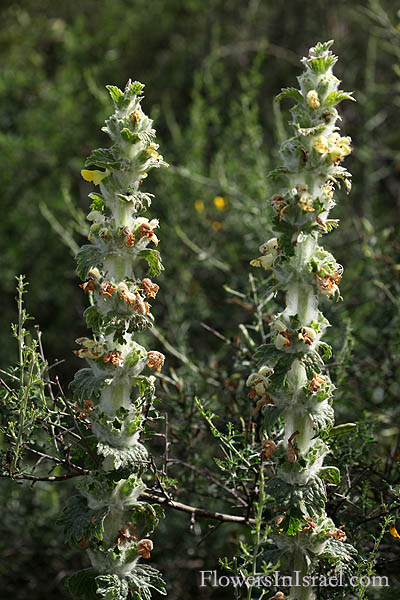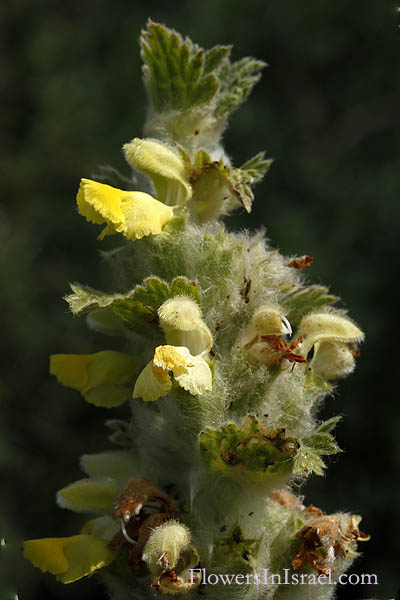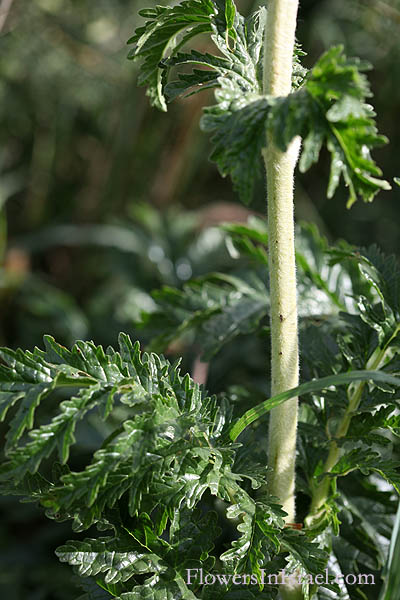Desert spike, Cut leaved phlomis,
Hebrew: צמר מפוצל, Arabic: ذيل الثعلب , هجنبل
| Scientific name: | Eremostachys laciniata (L.) Bunge | |
| Synonym name: | Phlomis laciniata L. | |
| Common name: | Desert spike, Cut leaved phlomis | |
| Hebrew name: | צמר מפוצל | |
| Arabic name: | ذيل الثعلب , هجنبل | |
| Plant Family: | Labiatae / Lamiaceae, שפתניים |

Location: Bene Zion Nature Reserve |
| Life form: | hemicryptophyte | |
| Stems: | 30-75cm high, erect, nearly simple stems | |
| Leaves: | Opposite, rosette; entire; dentate or serrate | |
| Flowers: | Cream, yellow, hermaphrodite | |
| Fruits / pods: | schizocarps. Nutlets | |
| Flowering Period: | February, March, April | |
| Habitat: | Batha, Phrygana | |
| Distribution: | Mediterranean Woodlands and Shrublands, Semi-steppe shrublands, Shrub-steppes, Montane vegetation of Mt. Hermon | |
| Chorotype: | Med - Irano-Turanian | |
| Summer shedding: | Ephemeral |

Location: Bene Zion Nature Reserve Derivation of the botanical name: Eremostachys, eremos, "solitary," and stachys, "an ear of corn or other grain," and thus meaning "bearing a single spike." laciniata means “slashed or torn into narrow divisions”, and refers to the heavily lobed leaves. Phlomis, Greek name for some plant without application here to these plants; Jerusalem sage.

Location: Bene Zion Nature Reserve |